Pasta e Fagioli
Pasta e Fagioli is one of my all-time comfort foods. When I worked in downtown New York City many years ago, we would order food from this little hole-in-the-wall Italian restaurant and their pasta e fagioli was out of this world.
So when I had the opportunity to meet home cook and food writer Eleonora “Lola” Baldwin from Rome, Italy online, I just had to ask her for her version of this wonderful comfort food.
I just interviewed Lola and if you are interested in Italian cuisine, culture, and lifestyle, I encourage you to read the entire interview. She is a wonderful writer with generations of handed-down knowledge of Italian cooking.
Her own food blog, Aglio, Olio & Peperoncino is filled with stories and recipes dating back to her childhood growing up in Italy to the present day. It’s a brilliant read.
Lola was kind enough to send me her recipe for Pasta e Fagioli and some facts about the dish that I think you will find fascinating. I’m hoping Lola will spend more time on The Reluctant Gourmet web site sharing stories and recipes from life in Italy.
Note: After Lola sent me her recipe, I had some questions that she answered and you can read them at the end of the recipe.
Lola’s Pasta e Fagioli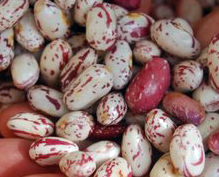
Remember Dean Martin swooning over his “pasta fazool?” This soup is what he meant when he swore it was Amore.
Pasta e fagioli – meaning “pasta and beans,” is the traditional meatless bean soup that is now a popular worldwide gourmet item. Like many other Italian favorite recipes, pasta e fagioli was a peasant food dish, due to cheaply available, stomach-filling beans and pasta.
Pasta e fagioli is made using borlotti beans (fat, pulpy medium-sized beans, light beige in color, speckled with dark brown flecks, the nearest equivalent is cranberry or pinto beans) and different types of small thimble-shaped pasta such as tubetti, ditalini or cannolicchi.
The dish’s consistency can vary; some renditions fall clearly in the thick soup category, usually because part of the beans is mashed during preparation to obtain a more creamy texture.
This rather thick life-saver soup is just what you want to engulf when the Fall rain’s mercilessly striking the window panes; and exactly what you need to cook to feel safe and warm, happy and engaged inside.
Casca a fagiolo, is the Italian saying that literally describes how something happens just at the right moment. This soup for example.
My Interview with Lola
I asked Lola if she only cooked with dried or fresh beans or if she ever used canned beans and she said,
Sure! I’m no fundamentalist when it comes to cooking beans. I use canned beans freely (provided they be well rinsed of their gelatinous storing gunk), but the healthiest, tastiest, and most common beans used in Italian cuisine “and for the best pasta e fagioli” are the dried ones.
Yes, cooking dried beans takes more time than opening a can, but you’ll be richly rewarded with superior flavor and texture. They will keep almost indefinitely, and a well-stocked Italian pantry always has a selection of two or more kinds of dried beans. For quick pasta e fagioli, you can use two 14-oz cans of beans.
What about the pasta? Is it always tubetti? Are there substitutes if tubetti isn’t available?
I’ve made it with broken noodles, fettuccine, mismatched shapes of equal-sized pasta, maltagliati, etc. The key requisite is that the pasta must be small enough to fit in a spoonful along with the beans.
Many American home cooks don’t own a food mill but do have food processors and blenders. Can they be used and if so, what are the advantages and disadvantages of using electric appliances?
Electric metal blades whirl so fast that they generate heat, which alters flavors. Plus they cut! That’s why pesto is best made with mortar and pestle. The flavor remains intact. If you really must make pesto with a food processor, remember: short bursts!
I have one too of course, and I use it a lot. But to puree, separating skins from pulp and ricing without rearranging molecular structure… you need a hand-powered food mill. It’s an inescapable must in an Italian kitchen!
We all have heard the term al dente and most of us know what it means but I asked Lola to give us her definition of “al dente” and she responded –
This is a matter of immense importance; thank you! Please remove all images of spaghetti flung on kitchen walls to check doneness from your mind. Please.
Pasta should, I correct myself, MUST be cooked al dente. That translates “to the tooth,” meaning it should oppose some kind of debate to our chewing apparatus.
Pasta should be firm but not snap in the middle; more importantly, it should not be overcooked in a mush-like fashion. Soft-boiled pasta is not tolerated in Italy.
Remember that ancient glue and modern children’s play-dough are “as pasta” a mixture of water and flour. The word ‘paste’ should ring a bell. We do not want to associate the primadonna of Italian food with any of its inedible adhesive cousins. Overcooking pasta and humiliating it to a mere wallpaper fixative is a sin.
The package will probably say how long the pasta should cook for but don’t trust it. A couple of minutes before it is supposed to be done, fish out a piece and bite it open; in the center, you will see a whitish area of uncooked pasta that is poetically known as the anima, or soul of the pasta. Continue cooking the pasta until the anima barely fades.
Some pasta al dente fundamentalists modify that calculation, considering altering factors such as water hardness, altitude, and the lunar cycle. Hard durum wheat vs. fresh homemade pasta will need longer cooking times.
That can range from 5 to 12 minutes according to shape, section thickness, and size. The longest pasta shape to cook is farfalle (bow tie shape); the shortest is spaghetti and all its thinner forms like capelli d’angelo (angel hair).
Don’t break long pasta to fit the pot: it’s un-Italian. The enjoyment of “long goods” is in the twirling. Use a fork to bend and lower it as it cooks until it fits the pot. Boil the pasta in plenty of lightly salted water. And remember to stir occasionally.
Buon appetito!
Lola
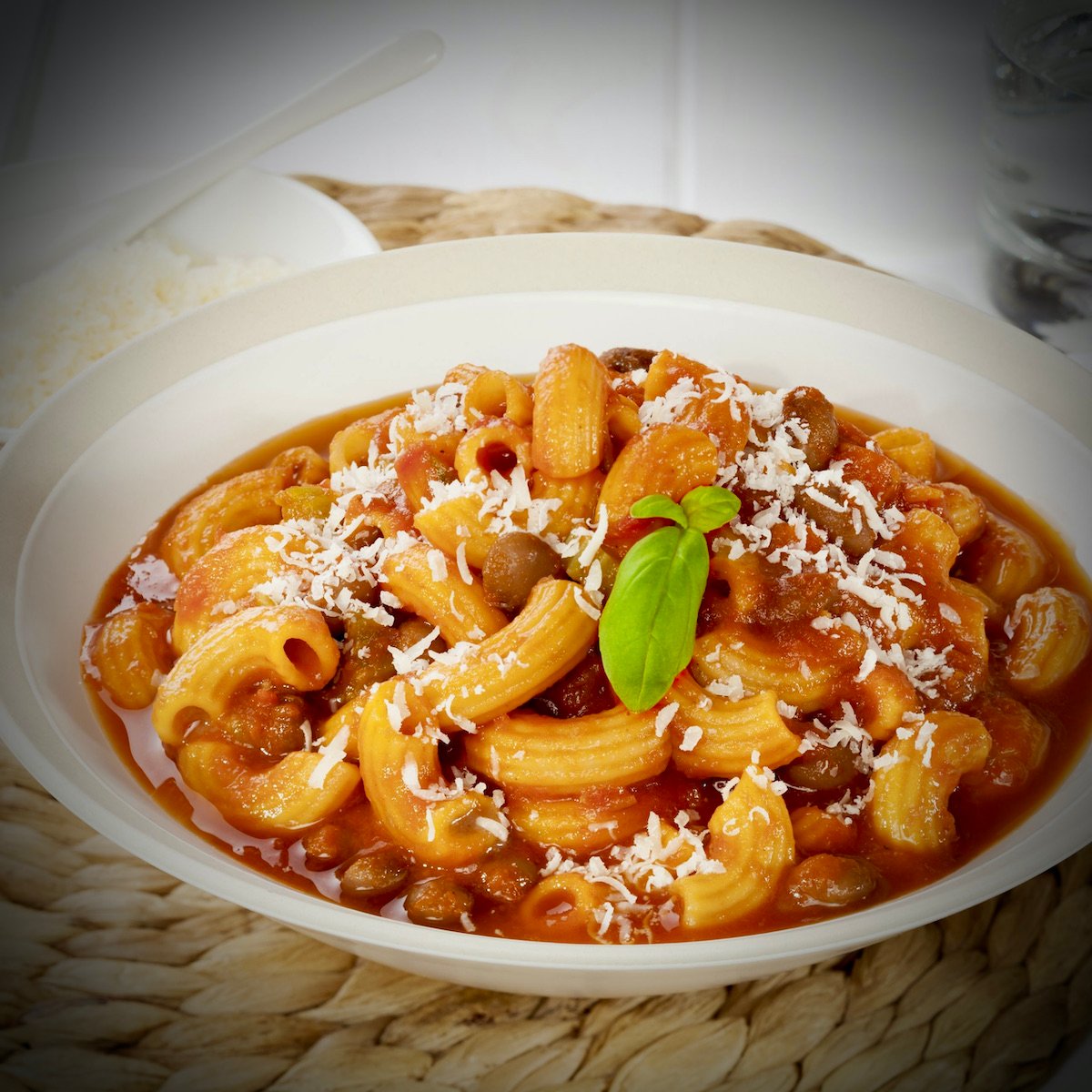
Lola’s Pasta e Fagioli Recipe
Ingredients
- 2½ cups dried cranberry beans about 3 cups fresh
- 1 clove clove
- 1 tablespoon rosemary needles minced (1/2 teaspoon dried)
- olive oil Extra virgin
- 2 oz pancetta or prosciutto
- 1¼ cups dried tubetti pasta good quality
- salt & pepper to taste
Instructions
- If you're using dried beans, sort them to remove stones or damaged beans and loose skins, soak them overnight and change the water at least once.
- Cook the beans in 2 liters (8 cups) of water, with the pancetta, garlic, rosemary and salt to taste until done--they should be quite soft.
- Remove half the beans from the pot with a slotted spoon and puree them through a food mill and toss them all back into the pot.
- Simmer the soup until it takes on a creamed velvety texture, with the whole beans bubbling along.
- Season to taste with salt and pepper, and cook the pasta in the soup until it is al dente.
- Adjust the seasoning, let the soup rest covered for a few minutes, then ladle the ambrosia into individual bowls, and serve drizzled with a thread of raw olive oil, paired with a nice red wine like a Chianti Classico.

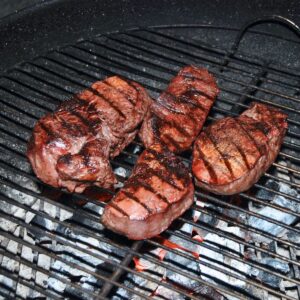
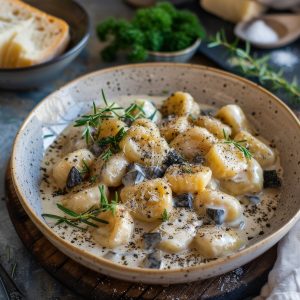
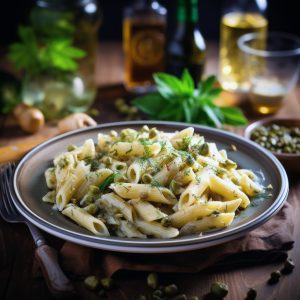
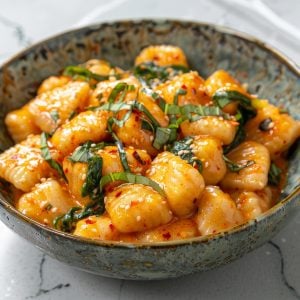
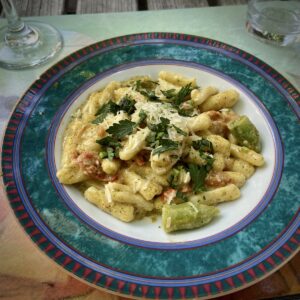
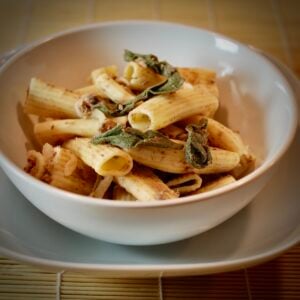
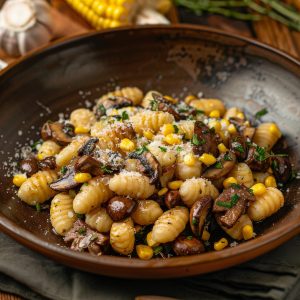
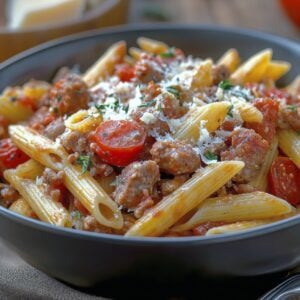
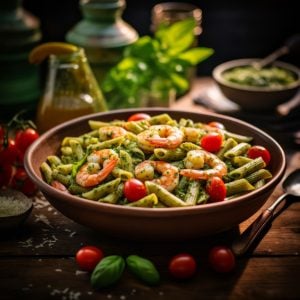


15 Responses
my wife was born in Italy and after we were married, we spent a lot of time at her parent’s for dinners and feast days, and I quickly adapted to the Iralian cuisine. I can almost taste the pasta e fagioli just reading the recipe. Thanks muchly. ciao
Hi Robert, must have been incredible to enjoy festive meals with your wife and family in Italy. I’m hoping between Lola an myself, we can come up with some more tempting recipes for you to try.
Loved reading your article on the ruluctant gourmet. Your family in Pebble Beach, California forwarded your site on to their friends including me. Loved reading your story and going to market. We need this warmth in our computer world. Jacquline
I just commented on your site about the Borlotti bean. This is one of my favorite soups.
You make us want to do better in the kitchen and at the market Lola.
Mmmm…buono, Lola! Ok, if the weather turning means it will soon be time for pasta e fagioli (my mouth is watering), then sign me up!
-GB, ed.
This is one of my favorite dishes and growing up in Rome was truly a gift. We used to go to a place we called the Nunery, not sure if it’s there anymore. It’s out towards Lago Bracciano. They made my favorite pasta e fagioli.
Thanks for sharing this. Un abbraccio forte!
Philip
All I can say is “Yummm!” I will have to try this although I am not sure I can find Barlotti beans! This was a dish my mother enjoyed – although picky kids that we were, we didn’t know how good it was! Now my mouth is watering! Thanks for sharing.
baci, baci,
Rosemary
Hi Rosemary, thanks for sharing your thoughts about this dish. Barlotti beans may be tough to find so you may want to substitute cannelloni beans.
Recently we made a trip to Rome for a vacation along with other stops. We fell in love with the fagioli soup and have been trying to find a recipe like it. searching I have found so many that added all kinds of things that were not in it and finally I found yours and it is GREAT. I am from New York where the real Italian food is and now live in the South where my husband is from. He never knew what the Real Italian Food taste like until we went to Italy. He enjoys it so much more now.
Hi TJ, I’m thrilled you found this Pasta e Fagioli recipe from my friend Lola. Can’t get any more authentic. I may go make some right now for the World Series.
Thank you so much for posting this recipe. I’ve been craving the Pasta Fagioli that I had at a great restaurant in Venice. I ate there many times and can’t remember the name of the restaurant. They were so nice that I’m sure they would have shared the recipe with me. But, until then, this recipe looks like it may be very close to that dish.
I’m looking forward to trying it and to checking out more of your reviews and more from Lola’s site as well!
Hi Nancy, thanks for sharing and please let me know how it turns out. – RG
I made a batch using dried cannellini and uncured bacon. The beans took 6 hours of cooking to soften. The bacon had 110 mg sodium for the 2 slices. I guess that was the problem. Sources say salt will cause the beans to stay hard. The bean bag was packed February 2010 and I was cooking mid December 2010, so i expected them to be fresh enough. Darling husband declared the soup real good and worth waiting to eat at 7 rather than 6.
Hi Gallega, did you soak the beans overnight before using them in the recipe? I have never heard that about salt causing the beans to stay hard….interesting though. Glad the dish was were the wait and thanks for telling us about your experience. – RG
I have spent a long time trying to find my gr. grandmother’s Pasta Fagioli recipe. My mom (now in her 80’s no longer remembers it). I tried your recipe just this week and struck GOLD! I sampled it out to numerous friends, the call backs were for more! This is a keeper.
Pasta Fagioli does not have tomatoes in it! LOL
Thanks Luc, I’ll be sure to pass your comments on to Lola – RG
Not sure if this is Italian “kosher” or not, but my grandfather’s mother and her parents came over from Italy. I don’t know where he got this recipe, but I make it this way (below) and it tastes delicious:
2 cans of dark red kidney beans (I usually use the Goya “in sauce” beans, as those add a nice flavor to the soup.)
2 cups of ditalini pasta
3/4 tbsp garlic powder OR 1 clove garlic
1 tbsp olive oil
1/4 tsp salt
1/2 tsp ground black pepper
parmesan cheese
I did approximate the olive oil, garlic powder, salt, and pepper, because I normally just measure it in my hand or shake it all into a small bowl. Basically, I use a “palmful” of garlic powder, and about half as much of salt and pepper, with maybe a tad more pepper. I also just pour in enough olive oil to leave a 2-3″ circle in the middle of the water, but I think it’s about a tablespoon, maybe a bit more. You can do this all to taste, obviously.
You empty both cans into a pot, put a can of water in, heat to boiling, then put the salt, pepper, and garlic powder in. The broth should have a nice rich flavor, but you be the judge. Then bring back to a boil and put the pasta in. Bring back to a boil and cook the pasta until al dente, stirring frequently so you don’t burn the beans. The soup should be a thick consistency, but not like a paste. (Think the Campbell’s Chunky soups.) Then you’re done, and when you serve it up in bowls, make sure to have heapfuls of parmesan stirred in. That’s a must. You can also add more olive oil. There is no such thing as too much olive oil in Italian cooking.
This is how I make it for relatively low cost, and it still turns out great for those who aren’t as texturally/tastefully-inclined. My girlfriend loves it, and she and I are both food connoisseurs, at least of the “cheaper” variety.
I am regular reader, how are you everybody? This post posted at
this web page is actually good.